Telegraph lines
12
12
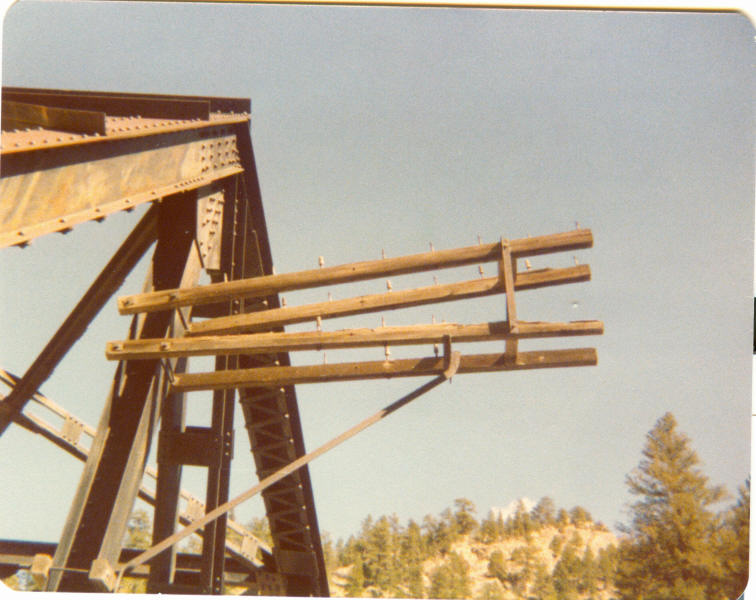 Telegraph Lines in Waterton Canyon During the late 1970s, several telegraph fixtures were still evident in Waterton Canyon. There were many stumps of telegraph poles. Some steel poles were still perched atop rock outcrops, including wooden cross beams. This photo showing the Deansbury Bridge telegraph fixture was taken during the spring of 1978. This bridge was removed and much of canyon flooded after the construction of the Strontia Springs Dam in 1979. |
|
In reply to this post by snapped_bolt
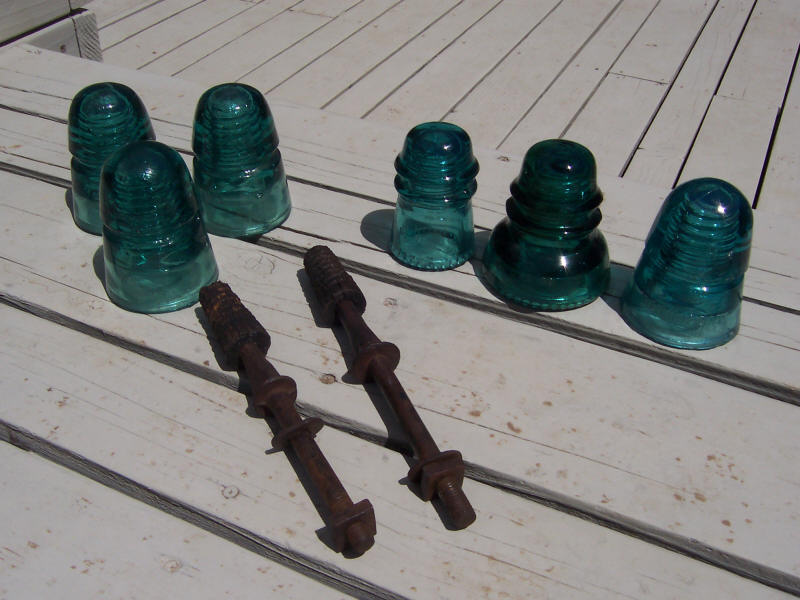 I found these glass telegraph insulators near the site of Strontia Springs, Colorado in 1978. Left to Right (3) Hemingray (1) Hemingray No. 16 (1) Hemingray No. 40 (1) H. G. Co. J Petticoat Below (1) Short pedestal, wood cap, and nut (1) Long pedestal, wood cap, and nut The telegraph poles in Waterton Canyon were sawed off probably in connection with the scrapping of the C&S railroad’s South Park Line between 1938 and 1941. A couple of the poles fell in groves of scrub oak and were buried by decades of autumn leaves, with insulators, caps, pedestals, and cross beams still intact in 1978. The telegraph lines were gone, but wire still wrapped some insulators. A nail was used with each nut to keep it from working loose over time. |
|
Thanks for the post.
The Hemingray beehives date to the teens. The No. 40 to 1912- 1921 period. The No.16 is telephone glass and should not be there. Perhaps used as swap-out glass for a "good" insulator by a collector ? The H.G. "Petto" is a fairly good piece, perhaps worth $40-$80 in that color. Made in Covington, Kentucky by Hemingray Glass Co. starting around 1884 until the early 90's, these were an early replacement glass on the old South Park lines during the UP era. A lot of the Pettos saw use on the High Line to Leadville. I have never had a strong interest in this line like I do for the original mainline, so I cannot say for sure if these were original construction material on the High Line or not. The dating is a pretty good fit though. Neat stuff. Thanks !
"Duty above all else except Honor"
|
|
What was a typical spacing between poles along the ROW? In pictures of Waterton they look to be about two hundred feet apart, but I'm about to plant some myself so my scene is more "complete". Thanks in advance for the help!
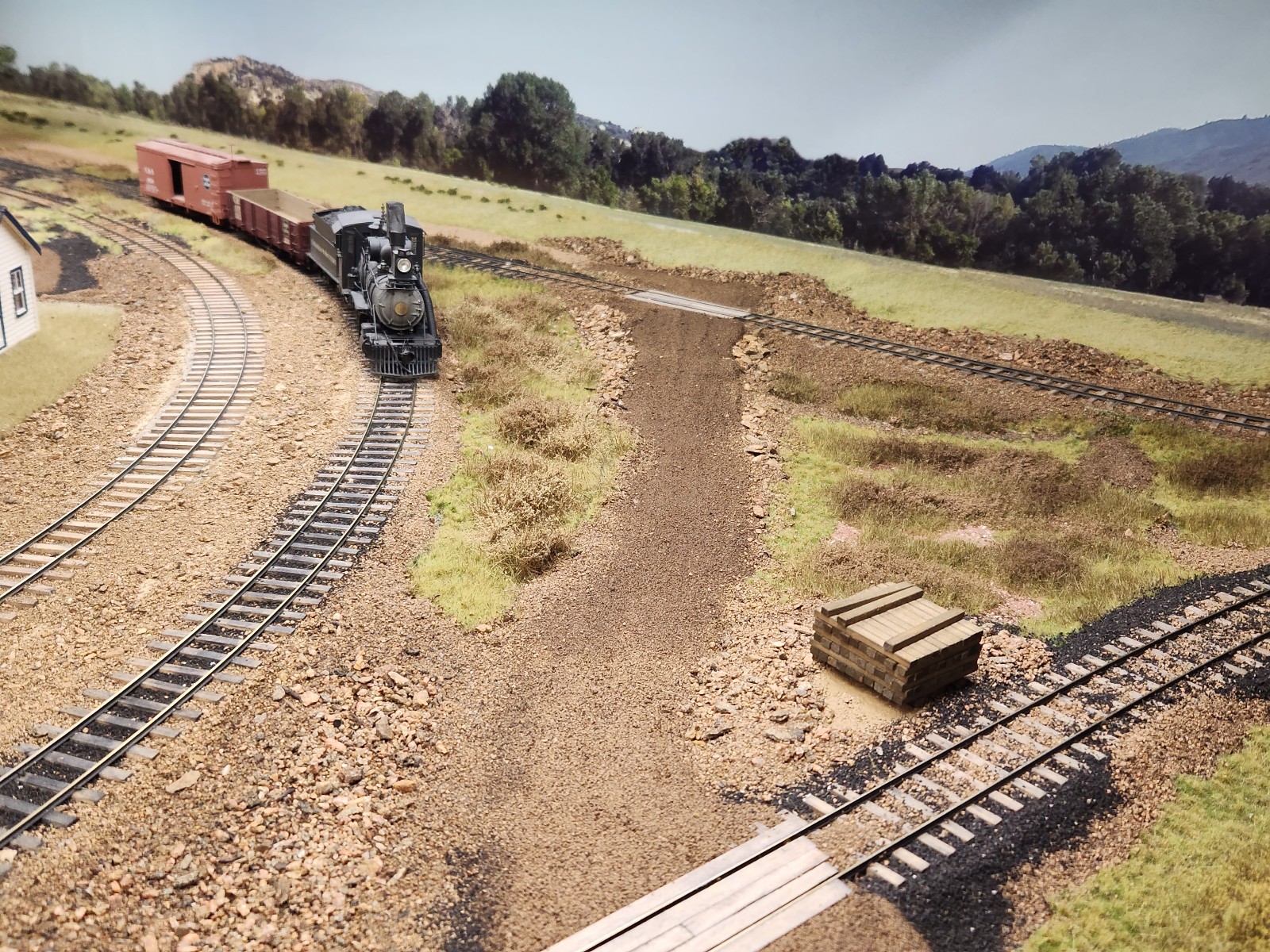 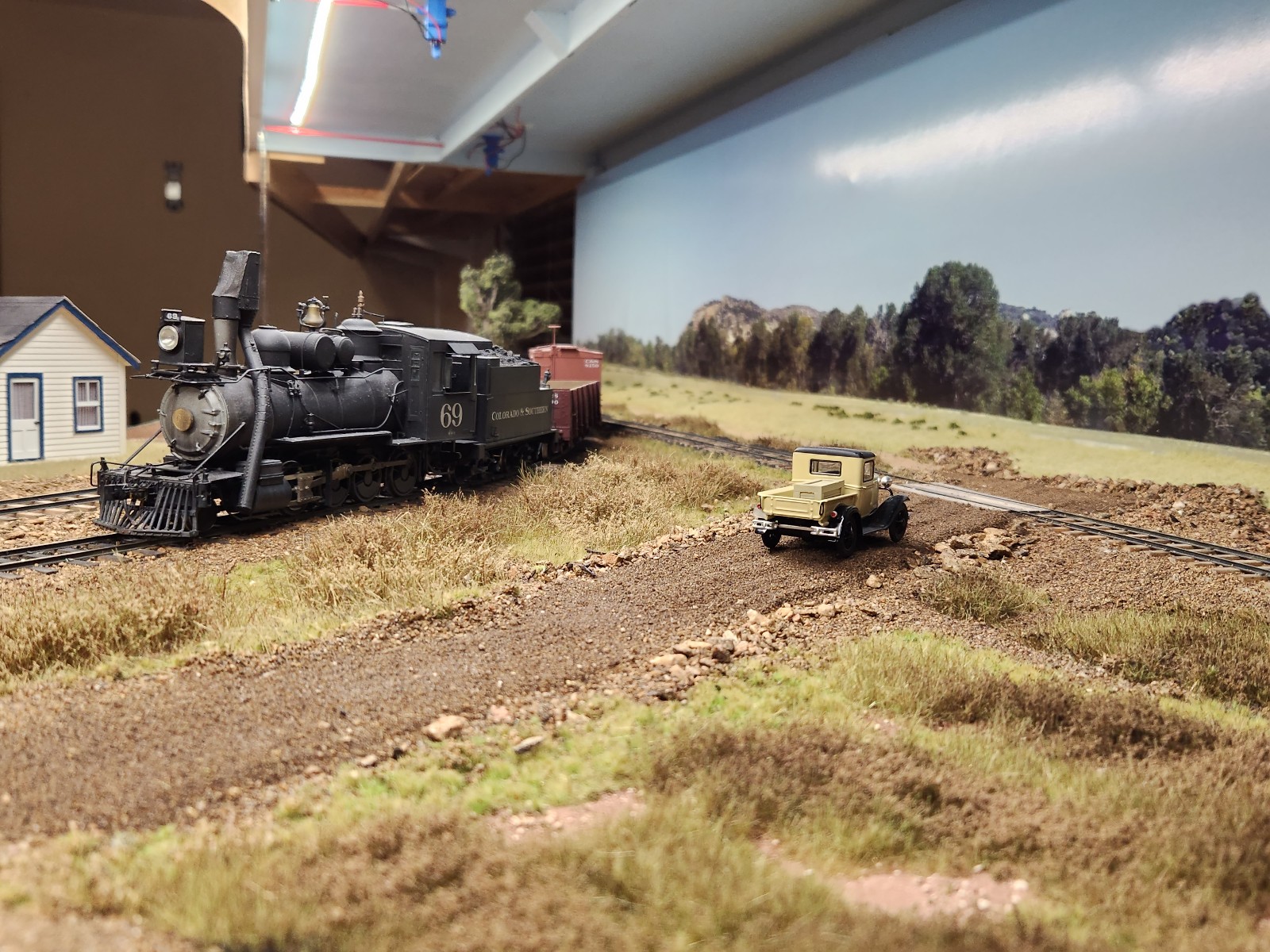
Norm in Littleton, CO
- on the C&S Silica Branch |
|
Beautiful, beautiful model building, Norm!
Jim Courtney
Poulsbo, WA |
|
A stretch of 1919 poles still stood to the Como side of 285
along the old mainline last time I was there. I think some were also still standing above Webster. WU had spacing standards that I cannot recall off the top of my head. They probably shortened those spans in heavy weather exposure areas. A field measurement of those locations would be the most accurate way to find out. 200' is WAY too long !
"Duty above all else except Honor"
|
|
In reply to this post by Jim Courtney
Thanks very much, Jim!
I met the venerable Jimmy Booth in Antonito summer before last and he and I spent a lot of time crewing and getting RGS 20 ready for her trip to Chama and back and became good friends. He visited CO in November and gave me a week-long master class scenery application and lesson and turned me on to Martin Wellberg's scenic mat products, which we've used extensively. I also applied a fascia and natural white LED strip lighting that really makes the scene come to life. I've been meaning to post (and take) more photos, but I have been busy working on the layout with what I have learned. After years of looking at painted pink foam and pine, I'm now thrilled to come downstairs and power up the layout, and it's inspired me to spend more time working on it. I've been adding to the scene on the east side of the yard for the last week. My photography skills are not as good as I'd like, but I'll try to get more pictures posted soon in the original Waterton thread.
Norm in Littleton, CO
- on the C&S Silica Branch |
|
In reply to this post by South Park
Thank you, SP - I'll jump in the truck and take a road trip up to the Park this week to pace off some poles!
Norm in Littleton, CO
- on the C&S Silica Branch |
|
The spacing doesn't seem to be always consistant,
see http://c-sng-discussion-forum.254.s1.nabble.com/Waterton-tp4017p4025.html vs this more regular spacing http://c-sng-discussion-forum.254.s1.nabble.com/A-Waterton-Teaser-tp17527.html I wonder why the disparity in Otto's #70 image? Wonderful rendering of your scenic materials in reproducing grass and weeds etc. Norm. Animals often wander making tracks and barren areas whilst browsing on the vegetation; yours gives that impression.
UpSideDownC
in New Zealand |
|
Thank you Chris!
The random placement of scenic components always gave me anxiety, but Jimmy really has a good eye for it, which I'm trying hard to duplicate. I may have answered my own question about the between pole distance. In the depot looking east photo there seem to be about 6 or 7 poles in view to the area from the depot out to just past where the east leg of the wye is, which is fairly close to the switch where the main and siding reconnect in my model. And it crosses the access road on the far end of the wye. My town of Waterton is curved out of necessity, and the length of the siding is about 160". Six poles into that distance equals 22 inches between poles, which just might work out to be a fair looking distance between poles, so I'll mock it up with 24" spacing of kabob sticks to see if they remain mostly parallel to the main line and don't look too goofy!
Norm in Littleton, CO
- on the C&S Silica Branch |
|
So here's an attempt at 22" spacing with kbob sticks, it just might work...
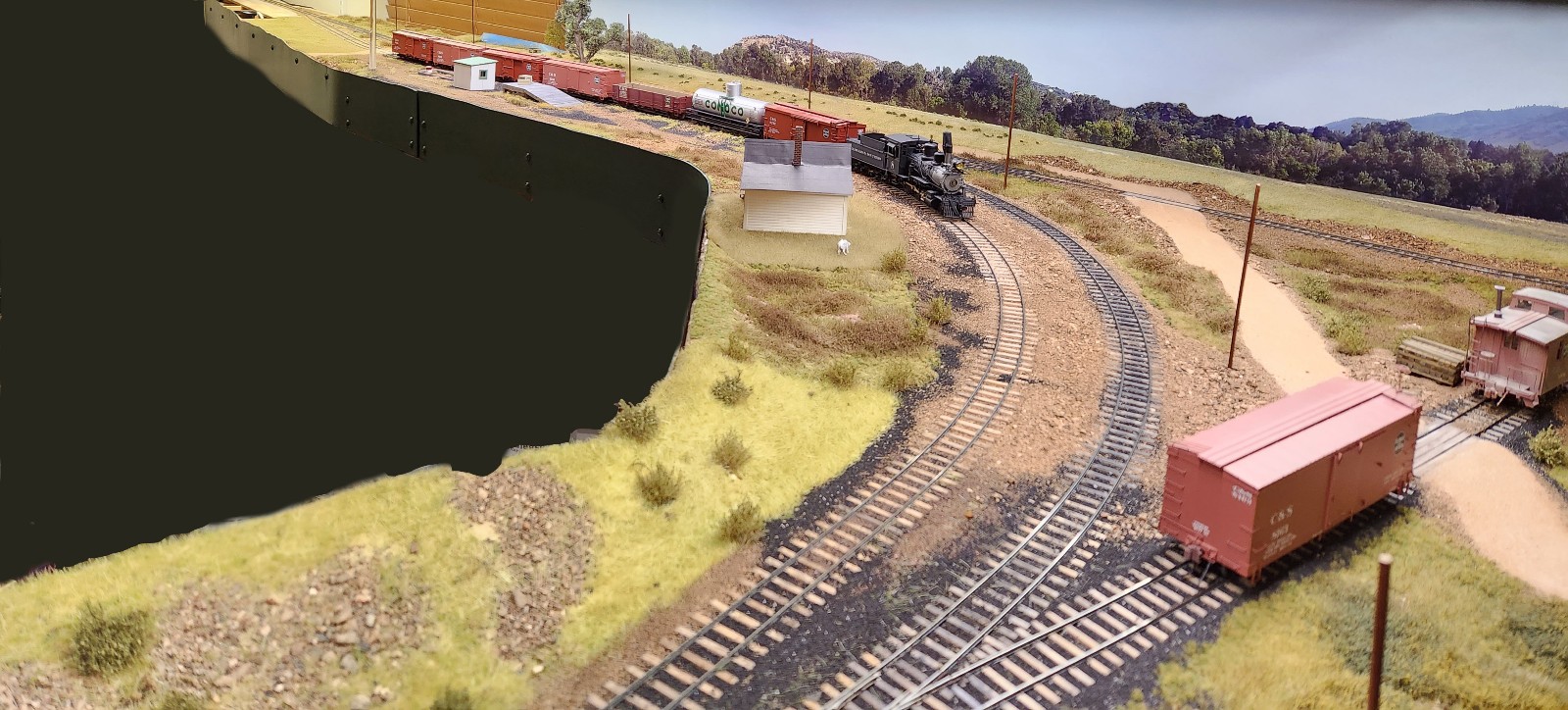
Norm in Littleton, CO
- on the C&S Silica Branch |
|
FWIW, I tried realistic pole spacing through Jefferson, but it looked "wrong", so I ended up using less. (I think I ended up with 11 - 12" in HO scale.)
The funny thing is, it looks a little short in these pictures, but looks "right" in person. :shrug: 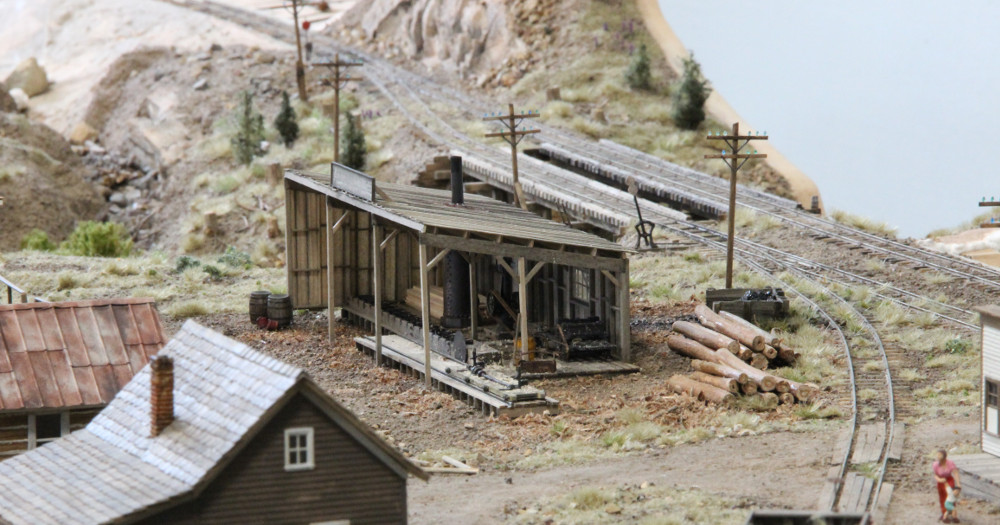 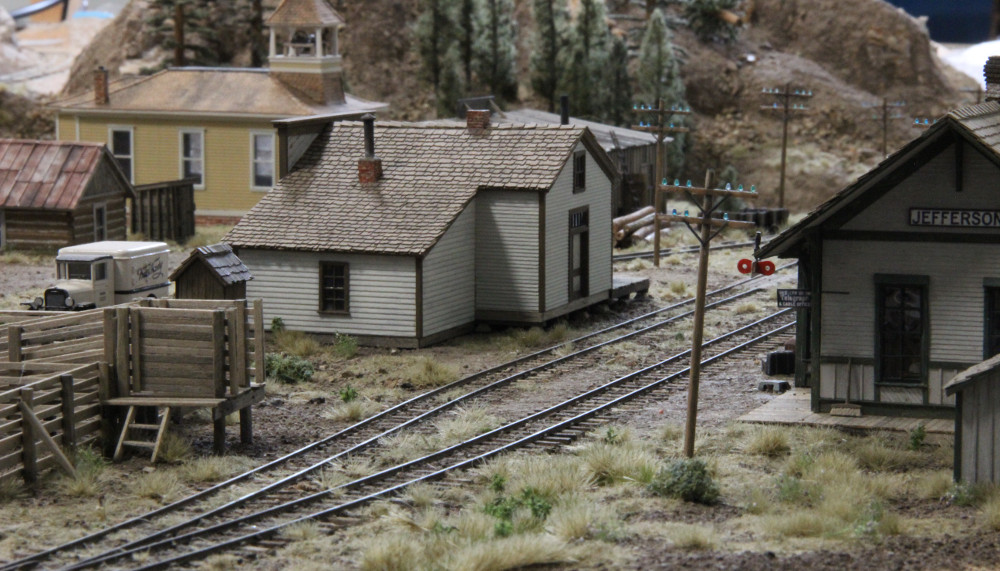
|
|
This post was updated on .
Jeff, I think they look great. I think that your impression is due to how perspective plays at the angle you're looking at the poles. Like using lighter wood for a model of a bridge at times to overcome perceived weight of the timbers versus reality, perhaps a very slight (very slight!) increase in distance between the poles--and maybe very slightly (just a miniscule fraction) thinner poles--and maybe artistic license reducing the number of insulators which have color that does draw attention--would help reduce the perception. I know that in prototype photos the poles often tend to disappear in the scene--color, background, interesting foreground objects all conspire to trick our eye into seeing less than is really there. And in person depth of field of the model is adjusted in our brains where the camera may force things nearer to each other into sharper focus to take away the impression of distance.
Dave Eggleston
Seattle, WA |
«
Return to C&Sng Discussion Forum
|
1 view|%1 views
| Free forum by Nabble | Edit this page |

